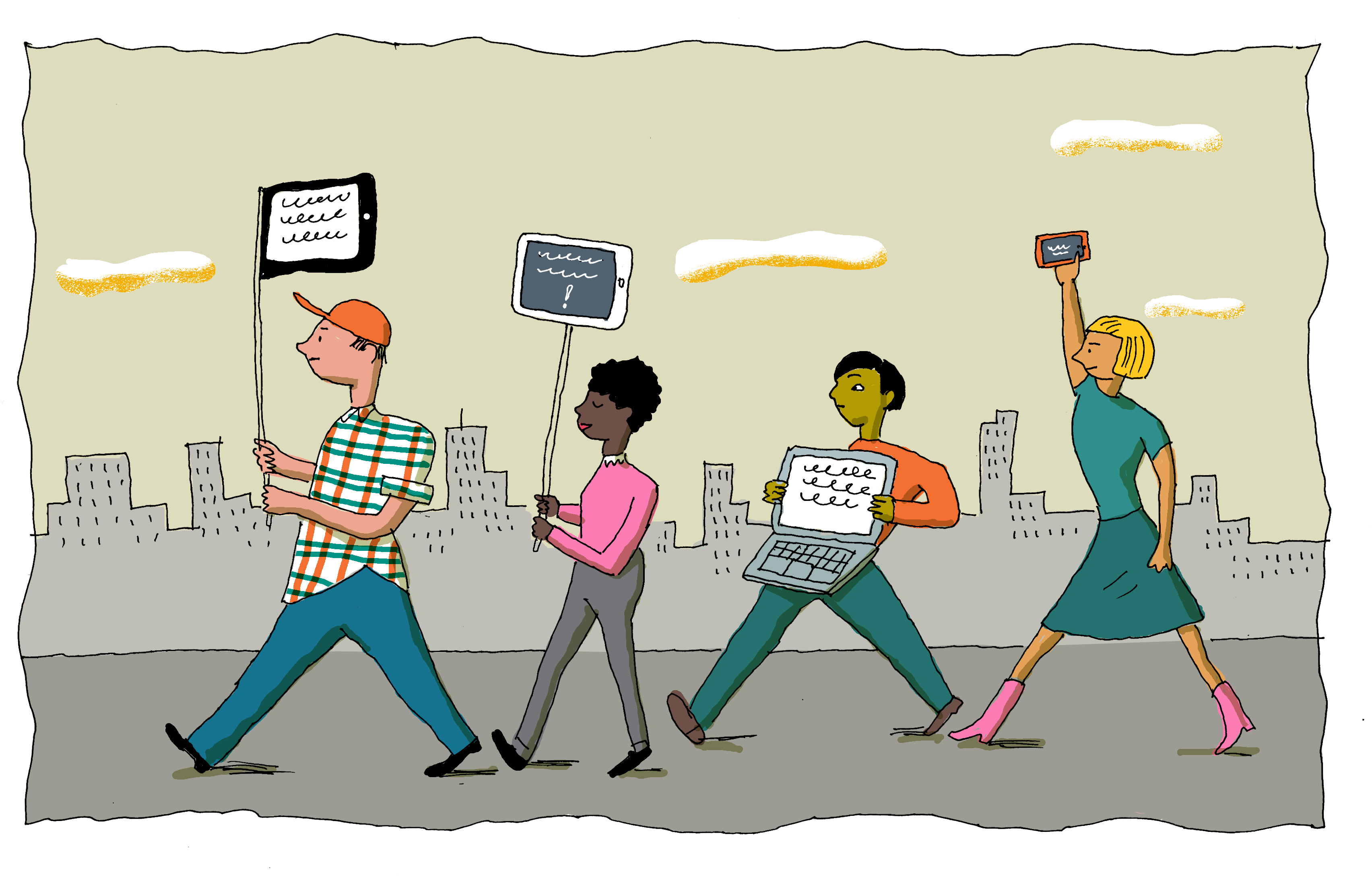Disciplinary literacy refers to the specifics of reading, writing, and communicating in a discipline. It focuses on the ways of thinking, the skills, and the tools that are used by experts in the disciplines (Shanahan & Shanahan, 2012). Each discipline like science, math, or history had a specialized vocabulary and components that are unique to that discipline. Content literacy strategies typically include ways to approach text in any discipline; they include predicting what the text might be about before reading, paraphrasing during reading, or summarizing after reading.
Examples of essential literacy strategies: English/Language Arts: story elements- who, what, when, where, why Mathematics: importance of each word and symbol History/Social Studies: time period- contextualization Science: graphs, charts, formulas
“Technology is increasingly woven into the fabric of our lives. It must also be woven into the fabric of education to help students hone the skills they need to be truly literate in today’s society.”
Digital literacy encompasses a broader range of skills from reading on a kindle to sharing videos on youtube. The American Library Association’s digital-literacy task force says, “Digital literacy is the ability to use information and communication technologies to find, evaluate, create, and communicate information, requiring both cognitive and technical skills.” Aside from finding and “consuming” digital content, like reading, digital literacy also refers to content creation. Content creation includes writing in digital formats; such as email, blogs, and Tweets, as well as creating media, such as videos and podcasts.


Lesson:
Poem Photo Story
Your assignment is to create a Photo Story of a poem using Photo Story 3 for Windows. Here are the steps:
1) Select a famous literary poem by a published author and get the poem choice approved by your instructor OR you may write your own original lyrical poem of sonnet length.
2) Use the PhotoStory program to sync images and music with the poem.
3) Save your project and prepare to present it to the class.
4) See the rubric below for grading guidelines.
Photo Story Rubric: Possible Points Points Awarded
Time length of presentation (2:00 25
minimum, 3:00 maximum)
Use of poetic devices: Rhyme scheme, Rhythm Figurative language (i.e. simile,
metaphor, onomatopoeia, personification, 25 paradox, symbolism, etc.)
OR TPCASTT of a famous poem
Slide Show Quality: effective transitions between slides, clear images, thematically appropriate images, readability of text (text does not interfere with images) 25
Music is thematically appropriate and compliments presentation without overpowering. Lyrics and volume from musical choice do not interfere with the poetry
Conventions: Poem is edited meaningfully for line breaks, separate 25 stanzas, spelling, usage, and punctuation
Comments: ____________________________________________________________________________________________
Links: Here is a website a found for digital literacies! https://www.literacyworldwide.org/blog/digital-literacies
http://ceedar.education.ufl.edu/cems/disciplinary-literacy/ https://catlintucker.com/2014/10/the-definition-of-literacy-is-changing/ https://www.edweek.org/ew/articles/2016/11/09/what-is-digital-literacy.html